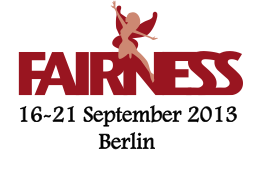Speaker
Dr
Christoph Langer
(NSCL)
Description
Experimental and theoretical investigations of nuclei far away from stability became a vital and active research field in nuclear physics in the past decades.
With the advent of radioactive beam facilities, isotopes close to the driplines can be produced and their structure is studied via scattering experiments at intermediate and high energies.
Neutron-proton asymmetric nuclei, i.e. nuclei having a large excess of protons over neutrons and vice versa, exhibit new phenomena, like e.g. the disappearance of conventional magic numbers, nuclear halo states and low-lying collective modes.
The structure of radioactive isotopes also plays a key role in nucleosynthesis occurring during stellar explosions and accreting neutron stars.
Still, open questions remain and new facilities are needed in order to
produce even more exotic nuclei with sufficient intensity to carry out reaction studies.
In this talk, I will review some recent experimental investigations of the single-particle structure and the collective response of short-lived nuclei, carried out at GSI in Darmstadt and at the National Superconducting Cyclotron Laboratory at Michigan State University (MSU).
The presented experiments also involve reaction studies specifically
designated to address open questions related to nuclear astrophysics.
The main focus of the talk will be on the experimental techniques and developments needed to successfully accomplish high-resolution studies of exotic nuclei.
Finally, an outlook will be given about anticipated nuclear reaction studies at FAIR and at complementary facilities like the Facility for Rare Isotope Beams (FRIB) at MSU.
Primary author
Dr
Christoph Langer
(NSCL)

